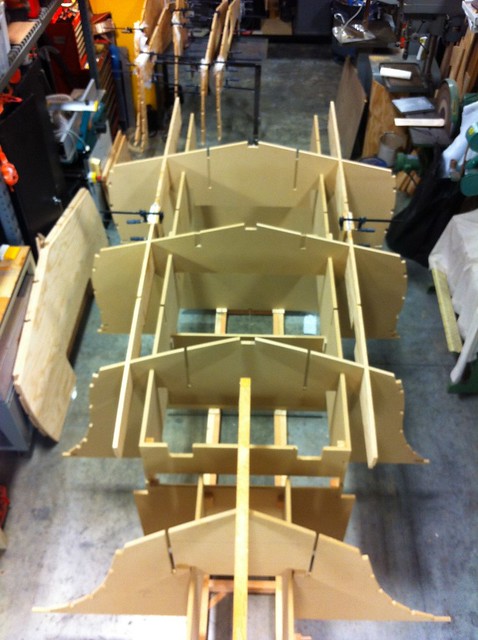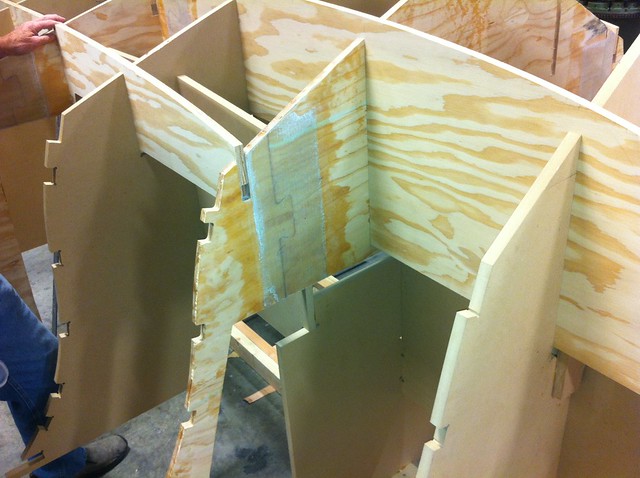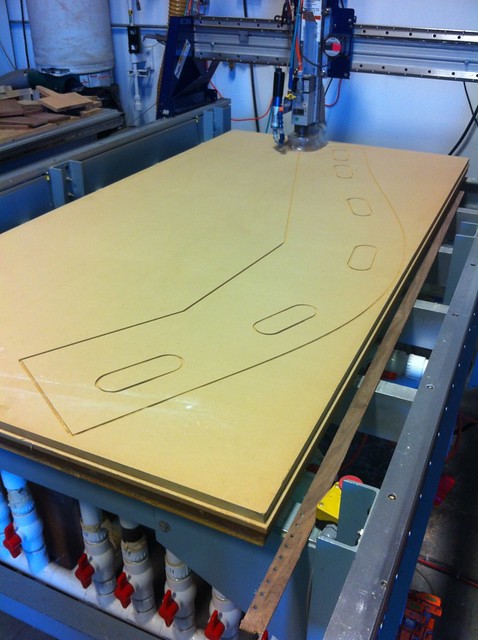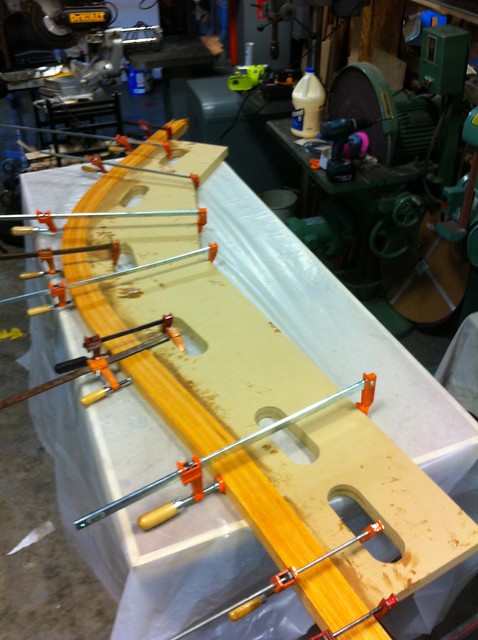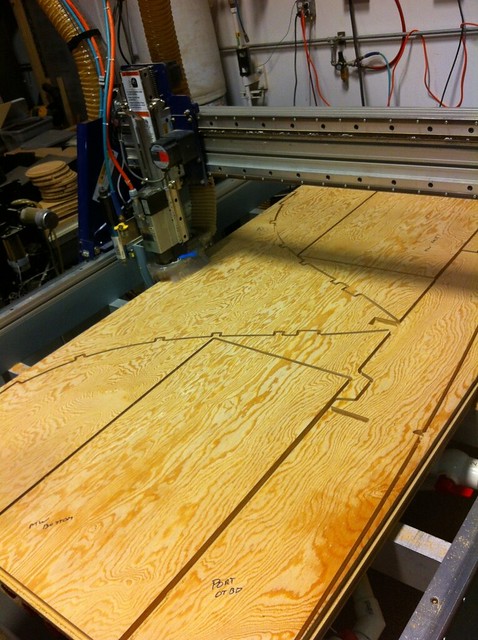In our last installment, I mentioned we’d gotten a bit ahead of ourselves in the photo I posted. That’s because you can see, in that photo, both the inboard and outboard stringer in their correct locations, and the plywood transverse frames nested on top of them. Getting to that point forced us to contend with our first “issue.”
I mentioned before that this is like building a house. You get plans and build from them. The plans are not infallible – even the ones fed into the router to produce high precision parts. A last minute change to the strongback in response to something the other builder had discovered created a minor glitch.
In the image below, you are looking at the port side inboard stringer on the right, which is notched into a frame on the left. If you look at the top of that intersection, you’ll see that the stringer is not fully “home.” It needs to slide down an inch and a half before it lines up with the frame. But if you look at the bottom of the stringer, you’ll see that it’s resting on the strongback already. No worko.
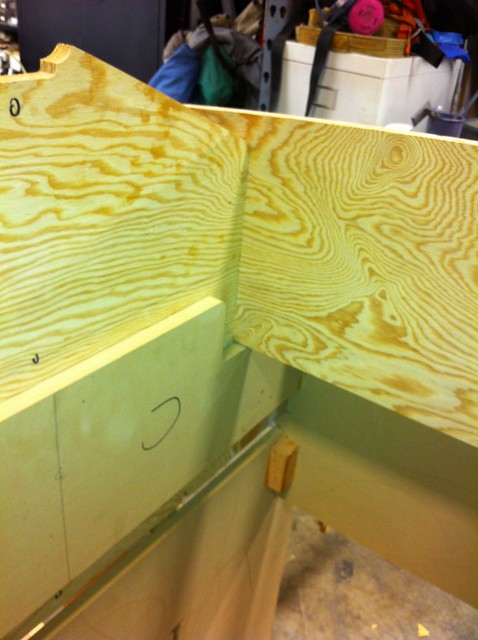
I assumed for a while that I was doing something wrong and kept scratching my head. Then I called Timm who scratched his head for a while before discovering the problem. The solution was simple… Cut away enough of the strongback to let it slide down.
As I write this a few weeks later, I’m getting more comfortable assessing what is and is not likely to be a glitch in the plans vs. a glitch in my execution and I’m pestering Timm a little less. This was the first one though so I got him on the phone before doing anything rash.
-Ben

